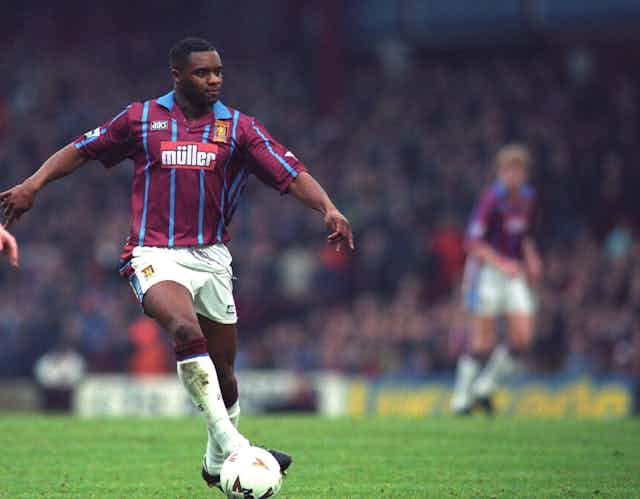On June 23, PC Benjamin Monk was found guilty of the 2016 manslaughter of Dalian Atkinson, a former professional footballer with an international career spanning 16 years, at Birmingham Crown Court. Monk, who has been sentenced to eight years, is the first police officer since 1986 to be found guilty of murder or manslaughter after a death in custody or following police contact in England and Wales.
It is possible, in theory, that a successful prosecution like this one might empower the Crown Prosecution Service (CPS) to authorise charges in more cases like this one. However, the prosecution of police or other state agents following a death in custody or police contact remain vanishingly rare.
Many activists are sceptical about the capacity of the state to hold itself accountable in the aftermath of police violence, and Monk’s conviction may not be the precedent it seems.
Since 1990 there have been 1,787 deaths recorded in England and Wales of persons in custody or following police contact. Over that 31-year period, the charity INQUEST found that in only ten instances were murder or manslaughter charges brought against police officers. None of these cases resulted in conviction.
The jury in Birmingham acquitted Monk of the murder of Atkinson, before finding him guilty of manslaughter. Without being in the jury room, it’s difficult to assess their reading of the evidence of the case. But from the verdict, we can deduce that the jury must have concluded that Monk didn’t have the intention to kill or cause serious bodily harm sufficient for a murder conviction. At the same time, they clearly rejected the claim central to Monk’s case, that he had acted in self-defence.
Faced with what he testfied was an “erratic” and “threatening” Atkinson, Monk discharged his Taser three times – once for 33 seconds, more than six times the recommended length of time the Taser should be used. As Atkinson laid unconscious on the ground, Monk kicked him at least two times in the head, hard enough to leave an imprint of his shoelaces on his skin. Atkinson died after going into cardiac arrest on the way to hospital.
Monk’s conviction for Atkinson’s manslaughter comes at an important juncture in the history of policing in the UK. This history is one marked by criticism of and protest against the overpolicing and disproportionate application of state force against black and brown people.
Disproportionate force is applied to racialised and minority communities at every point in the criminal justice system. This is true of the police use of stop and search powers, arrest and prosecution rates, conviction and imprisonment, and disproportionate rates of deaths in custody or following police contact.
Atkinson’s partner, Karen Wright, has discussed how Atkinson was “hounded” by police who racially profiled him throughout his life.
A global wave of Black Lives Matter protests over the summer of 2016 and in 2020 saw thousands of young people on the street throughout the UK protesting racist policing and police violence. An investigation of the policing of those protests found that police disproportionately used excessive force at black-led protests, and against black protesters in particular.
Racist language and ‘self-defence’
Testifying in his own defence, I was struck by the language Monk used to describe Atkinson prior to causing his death. Monk described his fear being “through the roof” when he was faced with an “erratic, unpredictable, terrifying … very, very scary” Atkinson, who was in the throes of a mental health crisis when Monk and a colleague were called out to an incident in August 2016. The jury failed to reach a verdict on assault charges against the colleague.
In Monk’s words, Atkinson’s face was “one of utter rage … It was surreal, he’d got the biggest wildest eyes I’d ever seen, they were protruding from his head.” Monk gave evidence that Atkinson as “quite simply huge”. “The bloke was towering above me, absolutely towering. His shoulders literally filled the frame of the door.”
A common way disproportionate and deadly violence against black men has been justified and excused throughout history is by invoking exactly these tropes that Monk relies on in his defence: that black men are enraged, hulking, out of control, inhuman. Research into the disproportionate rate of deaths in custody and following police contact of black and brown people shows that these types of stereotypes are frequently used to justify the use of force, including of weaponry and untested or sanctioned restraint techniques.
Policing and mental health
Atkinson’s case again brings to the fore activist calls to defund the police in favour of better funding for mental health support, youth centres, social care and housing and domestic violence services.
Police watchdog the Independent Office for Police Conduct recently launched yet another inquiry into a death in custody, this time of 30-year-old Leighton Jones in Wales, who died after being restrained by police during a mental health crisis. Police are not trained to deal with or provide the care necessary for people who need mental health support, and medical neglect is another frequent cause of death for black and brown people who come into contact with the police or who are in prison.
Atkinson’s family had to wait five years for this conviction. There are literally hundreds of other families, like those of Mark Duggan, Paps Ullah, Azelle Rodney and Sean Rigg who have never seen any kind of criminal justice accountability for the deaths of their loved ones after contact with police.
Unfortunately there will be more. We can hope and continue to work together, however, for a change in policing and justice for victims, their families and society.

